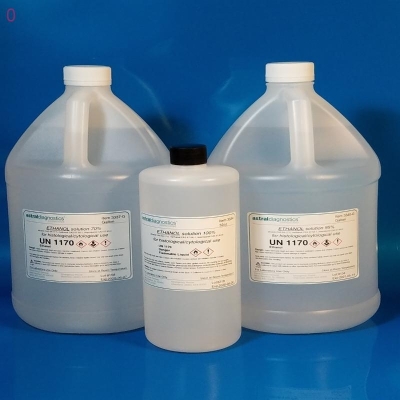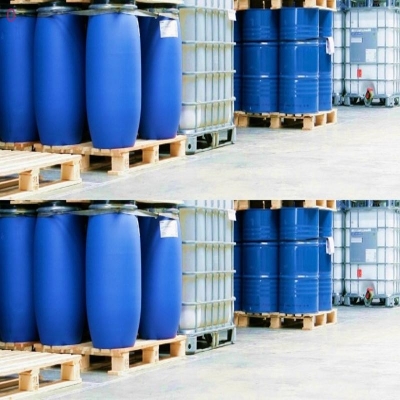-
Categories
-
Pharmaceutical Intermediates
-
Active Pharmaceutical Ingredients
-
Food Additives
- Industrial Coatings
- Agrochemicals
- Dyes and Pigments
- Surfactant
- Flavors and Fragrances
- Chemical Reagents
- Catalyst and Auxiliary
- Natural Products
- Inorganic Chemistry
-
Organic Chemistry
-
Biochemical Engineering
- Analytical Chemistry
- Cosmetic Ingredient
-
Pharmaceutical Intermediates
Promotion
ECHEMI Mall
Wholesale
Weekly Price
Exhibition
News
-
Trade Service
The government work report of the National Two Sessions this year stated that the main objectives and tasks during the "14th Five-Year Plan" period include continuous improvement of environmental governance and basically eliminating heavy pollution
.
This clarifies the direction for air pollution control
x
Why are the air quality assessment indicators adjusted? How will the next air pollution prevention and control work be guided? Our reporter interviewed Feng Yinchang, a professor at the School of Environmental Science and Engineering of Nankai University
.
The concentration of sulfur dioxide has reached the national standard, and sulfur dioxide is no longer a major problem of air pollution
.
The main precursors of ozone, NO x and VOCs emissions remain high, which is the main cause of ozone pollution
x
China Environmental News: The air quality is no longer evaluated for sulfur dioxide, it becomes an evaluation for VOCs
.
Why are the assessment indicators adjusted like this?
Feng Yinchang: During the "14th Five-Year Plan" period, the adjustment of the assessment indicators for air pollution prevention and control work is very important and necessary
.
This adjustment is closely related to the changes in the characteristics of air pollution in China
On the one hand, from the point of view of sulfur dioxide indicators
.
Sulfur dioxide is one of the most representative pollutants emitted from coal combustion
On the other hand, China’s ozone concentration has been slowly increasing in recent years, and ozone has become an important factor affecting air quality, second only to PM2.
5
.
The main precursors of ozone, NOx and VOCs, are in the ten-million-ton level, and emissions remain high, which are the main cause of ozone pollution
Compared with sulfur dioxide, the reduction of NOx started relatively late.
After the "Twelfth Five-Year" and "Thirteenth Five-Year" emission reductions, NOx emissions have fallen, but the overall level is still at a relatively high level
.
At the same time, the number of motor vehicles has been increasing in recent years, and the contribution rate of their NOx emissions has been increasing
Previously, there were no clear mandatory assessment requirements for VOCs at the national level
.
In recent years, various localities have made a lot of useful explorations on the reduction of VOCs, and have achieved certain results, but their emissions are still very large
China Environment News: Is PM2.
5 still the focus of assessment that needs attention at the moment?
Feng Yinchang: Since the state issued new environmental air quality standards in 2012, PM2.
5 has always been the focus of China's air pollution prevention and control work
.
Since 2013, through a series of important measures such as the "Air Pollution Prevention and Control Action Plan" and the implementation of the "Blue Sky Defense" three-year action plan, the governance work has achieved remarkable results
.
In 2020, the national average concentration of PM2.
5 is 33 micrograms/m3, and the average concentration of cities where PM2.
5 does not meet the standard is 28.
8% lower than in 2015
.
The drop in PM2.
5 is very significant
.
However, severely polluted weather with PM2.
5 as the primary pollutant still occurs in individual regions and individual periods
.
During the alternate period of winter and spring, heavy pollution weather still occurs in Beijing-Tianjin-Hebei and surrounding areas, Fenwei Plain, Northeast China, Northwest China and other regions
.
There are still many cities where the annual average concentration of PM2.
5 does not meet the national second-level standard.
It is still the focus of future air pollution prevention and control work.
During the "14th Five-Year Plan" period, PM2.
5 will continue to be used as an air quality assessment indicator and fully reflect air pollution.
Continuity of prevention and control work
.
In the setting of air quality assessment indicators, on the one hand, it is the coordination of PM2.
5 and ozone pollution control; on the other hand, it is the coordination of air pollution control and the response to greenhouse gas emissions
.
China Environmental News: What factors are the considerations for the adjustment of the assessment indicators?
Feng Yinchang: In recent years, as our understanding of ecological and environmental issues and environmental management has continued to deepen, in response to changes in pollution characteristics and major contradictions, relevant national assessment indicators have also been continuously adjusted
.
However, in general, the assessment indicators are mainly divided into two categories.
One category is the pollutant emission indicators, such as the reduction ratio of NO x emissions and sulfur dioxide emissions
.
The other category is air quality indicators, such as the PM2.
5 concentration value or its reduction ratio, the number of days with good quality, and the number of days with heavy pollution
.
The two categories of indicators cooperate with each other and play a very important "baton" role in China's air pollution prevention and control work
.
Judging from the history of air pollution prevention and control in China, we have gone through several stages from pollution source management, to total management, and then to environmental quality management
.
The continuous adjustment of assessment indicators is precisely the need to adapt to changes in management models and pollution characteristics
.
At this stage, our country focuses on environmental quality management, which also reflects the people-oriented concept.
However, the improvement of environmental quality is based on the reduction of pollutants.
Therefore, while setting environmental quality indicators, the total emission reduction of major pollutants is set.
Goals can better escort the realization of environmental quality goals
.
China Environment News: Does the setting of the five air quality assessment indicators also reflect the concept of collaborative governance?
Feng Yinchang: Indeed
.
In the setting of air quality assessment indicators, collaborative governance is mainly reflected in two aspects
.
On the one hand, it is the synergy of PM2.
5 and ozone pollution control
.
PM2.
5 and ozone pollution have the same roots.
NO x and VOCs are both the precursors of ozone and the precursors of secondary particulate matter in PM2.
5.
They are two aspects of the same problem
.
It can be said that NO x and VOCs are the bridge for the coordinated control of PM2.
5 and ozone.
Strengthening the reduction of NO x and VOCs fully reflects the concept of coordinated governance
.
On the other hand, it is the synergy of air pollution control and response to greenhouse gas emissions
.
China's air pollution is mainly caused by the energy structure of fossil energy, which emits both air pollutants and carbon.
Therefore, the coordination of air pollution prevention and carbon emission reduction is also the only way
.
With the continuous deepening of air pollution control, it is becoming more and more difficult to reduce pollutant emissions.
Further continuous improvement of air quality can be achieved through carbon emission reduction
.
For example, if the proportion of low-carbon energy use becomes higher and higher, it will inevitably bring about a significant improvement in PM2.
5 pollution, thereby achieving "coordinated efficiency in reducing pollution and carbon
.
"
China Environment News: Now that the "14th Five-Year Plan" has begun, what issues need to be paid attention to when localities arrange specific tasks based on air quality assessment indicators?
Feng Yinchang: All localities must adhere to the principle of classification and step-by-step, and fully implement the concept of precise pollution control and scientific pollution control
.
On the one hand, it is necessary to fully understand and grasp the local pollution characteristics, main pollutant discharge characteristics, basic capabilities and management level, etc.
, identify the main pollution sources and key pollution production links, and focus on the reduction of air pollutants
.
On the other hand, we should pay attention to practical results, adhere to a gradual and orderly progress, and implement emission reductions step by step
.
The ultimate goal of the country's assessment is the result, to avoid "action", but the effect did not meet expectations
.
It is necessary to strengthen the construction of VOCs monitoring capacity, conduct a comprehensive effectiveness evaluation of the existing VOCs governance facilities, provide various scientific and technological support for the effective emission reduction of VOCs, and strengthen technical guidance to enterprises
.
China Environment News: VOCs are included in air quality assessment indicators for the first time
.
Currently, what are the difficulties in managing VOCs?
Feng Yinchang: At present, all regions have not yet fully and accurately grasped the status of VOCs pollution and emissions
.
For example, what is the amount of VOCs in the air? What are the main types of substances? What are the characteristics of temporal and spatial distribution? Where did it come from? What are the emission rules? These questions have not yet been well answered, which has brought certain difficulties to the management of VOCs
.
VOCs management has been carried out in various places, and VOCs industry emission standards and comprehensive emission standards have been issued one after another.
Most VOCs emission sources have also installed treatment facilities, but the effect is not particularly good at present
.
On the one hand, the existing treatment facilities or technical routes are not sufficiently matched to the actual emission characteristics
.
There are multiple technical routes for the treatment of VOCs, with different efficiencies and great differences in adaptability .
At the same time, the VOCs emission situation is complex, and the species, generation and emission methods are very different.
Even if these are the same, different air volumes or speeds may require different technical routes
.
For example, activated carbon adsorption technology, even if the same pollutant, under different air volume, the treatment effect may be very different
.
If the air volume is too large and the pollutants stay in the treatment facility for too short, the adsorption effect of activated carbon will be greatly reduced
.
On the other hand, the efficiency of treatment facilities is mostly not high enough, and the normal operation and maintenance are not enough, resulting in failure to meet the required design decontamination requirements
.
In addition, many VOCs belong to unorganized emissions and can only be managed in a centralized manner if they are effectively collected.
Therefore, whether or not they are collected and how efficiently they are collected are also problems in the current VOCs governance
.
China Environment News: In view of the difficulties in the governance of VOCs, what new deployments and new arrangements need to be made by the local government? What capacity building needs to be strengthened?
Feng Yinchang: First, we must strengthen the construction of VOCs monitoring capabilities, including monitoring of emission sources and monitoring of VOCs in ambient air
.
Really understand the VOCs emission situation and find out the bottom number, which is the basis for targeted VOCs emission reduction
.
The second is to conduct a comprehensive effectiveness evaluation of the existing VOCs treatment facilities, find out the main reasons for the unsatisfactory treatment effect, adhere to the "one enterprise, one policy", and formulate plans for upgrading, reforming or replacing technical routes
.
The third is to strengthen scientific and technological support
.
Effective emission reduction of VOCs requires scientific and technological support in many aspects
.
What are the VOCs that have a greater impact on ozone and PM2.
5, what sources are mainly emitted, and what technical route to choose for governance, etc.
, all require strong scientific and technological support to effectively reduce emissions
.
The fourth is to strengthen technical guidance to enterprises and maintain the continuity of policy requirements
.
Most companies have the initiative to control pollution, but many companies do not know what kind of treatment facilities should be used.
At the same time, there are situations where the requirements may change every year, making it difficult for companies to choose
.







